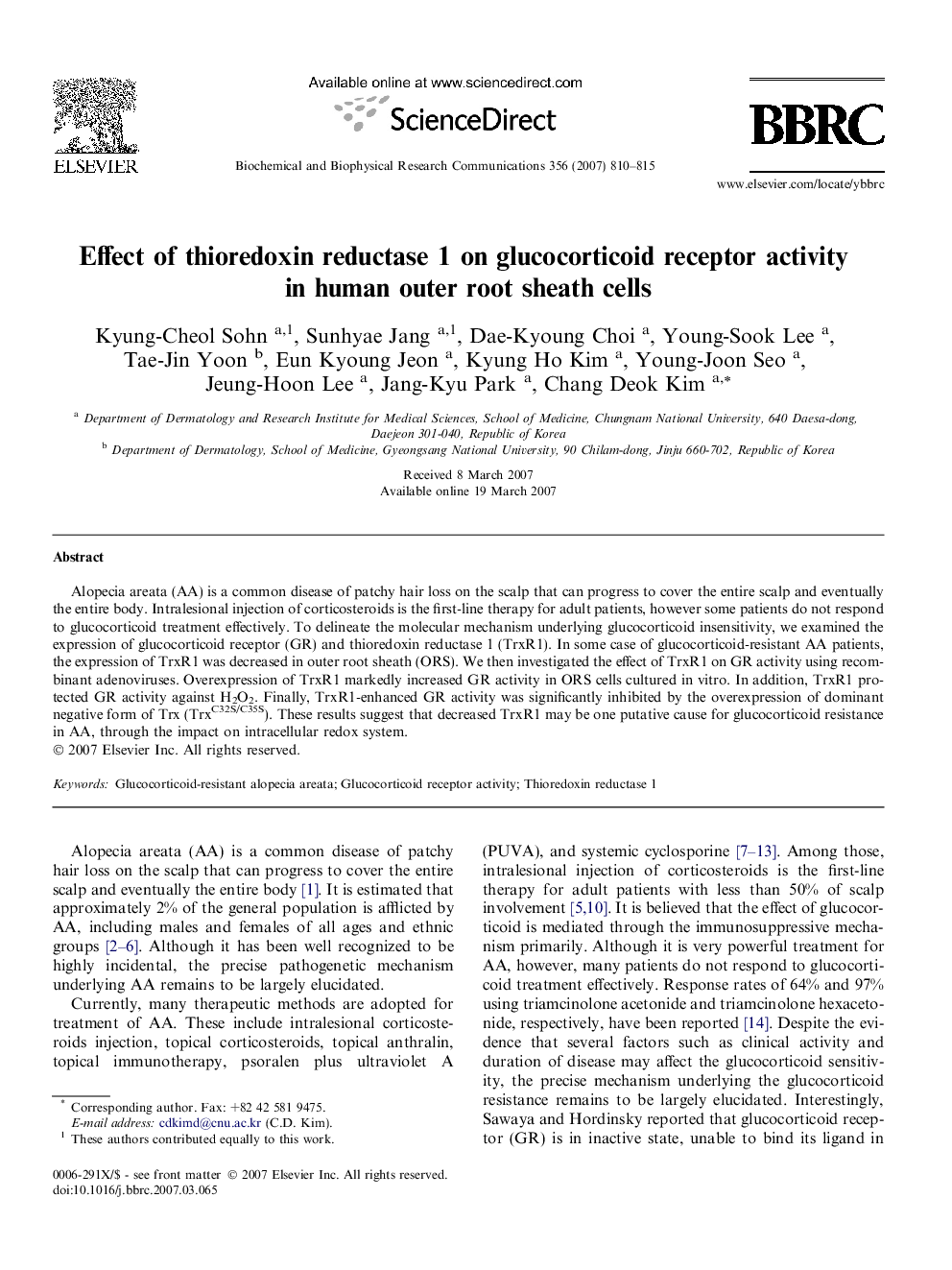| Article ID | Journal | Published Year | Pages | File Type |
|---|---|---|---|---|
| 1937886 | Biochemical and Biophysical Research Communications | 2007 | 6 Pages |
Alopecia areata (AA) is a common disease of patchy hair loss on the scalp that can progress to cover the entire scalp and eventually the entire body. Intralesional injection of corticosteroids is the first-line therapy for adult patients, however some patients do not respond to glucocorticoid treatment effectively. To delineate the molecular mechanism underlying glucocorticoid insensitivity, we examined the expression of glucocorticoid receptor (GR) and thioredoxin reductase 1 (TrxR1). In some case of glucocorticoid-resistant AA patients, the expression of TrxR1 was decreased in outer root sheath (ORS). We then investigated the effect of TrxR1 on GR activity using recombinant adenoviruses. Overexpression of TrxR1 markedly increased GR activity in ORS cells cultured in vitro. In addition, TrxR1 protected GR activity against H2O2. Finally, TrxR1-enhanced GR activity was significantly inhibited by the overexpression of dominant negative form of Trx (TrxC32S/C35S). These results suggest that decreased TrxR1 may be one putative cause for glucocorticoid resistance in AA, through the impact on intracellular redox system.
